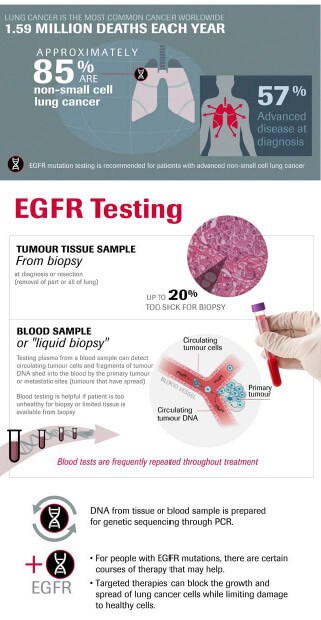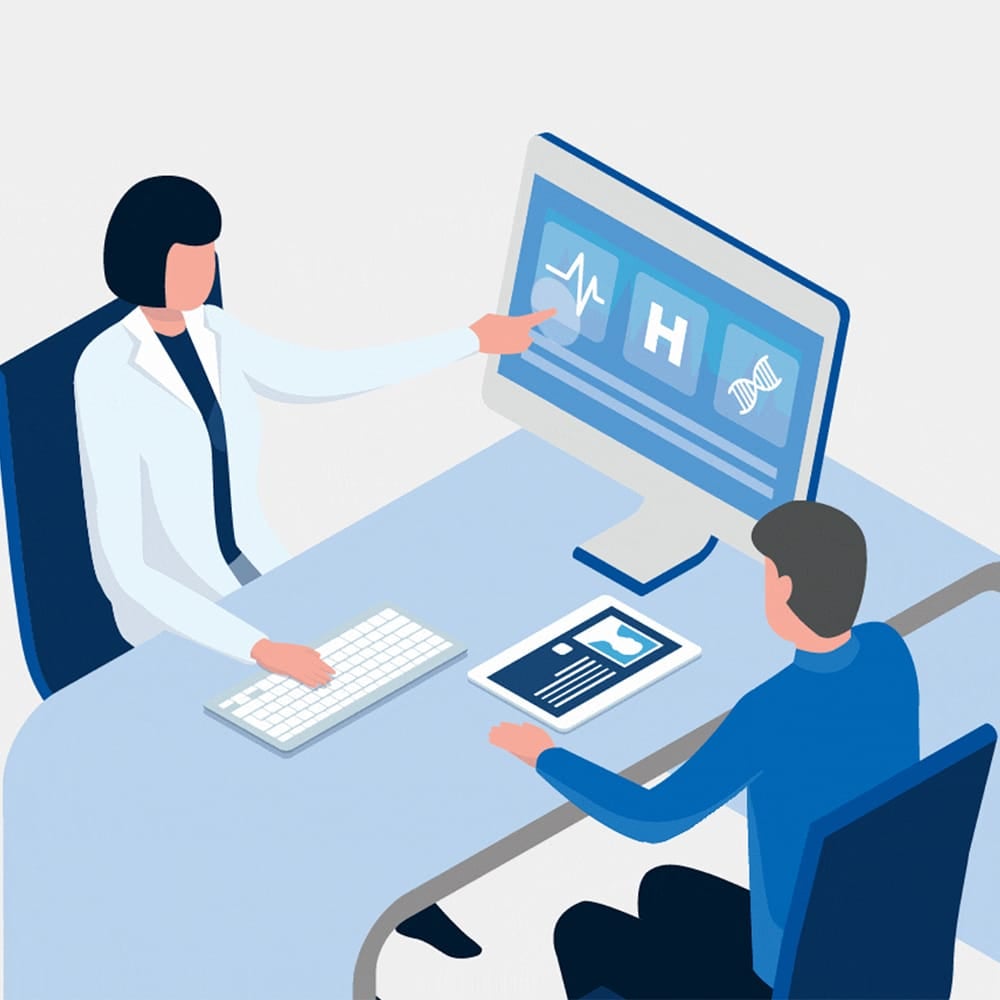New blood testing technology driving personalised care in lung cancer management
In this interview with Diagram magazine, Dr Pathmanathan Rajadurai, Senior Consultant Pathologist and Laboratory Director at Subang Jaya Medical Centre (SJMC) in Malaysia talks about the significance of liquid biopsy testing for non-small cell lung cancer with Epidermal Growth Factor Receptor (EGFR) mutations. SJMC was among the first facilities in the region to adopt liquid biopsy, and Dr Pathmanathan reflects on how the molecular targeting of oncogenic mutations is central to personalised care in lung cancer management.
Over the last five years, the number of new lung cancer cases has been rising steadily in Malaysia,¹ and Asia Pacific as a whole.² 51% of the world’s lung cancer cases occur in Asia.³ However, it is not only the increasing burden that concerns Dr Pathmanathan but also the complexities associated with late stage diagnoses and the emergence of early resistance to treatment that impact patient survival rates. Which is why Dr Pathmanathan’s recent research explores driver mutations in the multiethnic Malaysian population.⁴
Markers such as EGFR can be used to predict treatment response to EGFR tyrosine kinase inhibitors, which are crucial to slowing or stopping cell growth in these type of tumours. Dr. Pathmanathan had previously used traditional tissue sampling, but soon realised that this collection method was not always feasible, particularly in cases where the disease had significantly advanced, the quality of the tissue yield did not meet standards, or the tumour was located in an inaccessible region where extraction could pose a risk to the patient.
In such cases, Dr Pathmanathan said, liquid biopsy has proven to be a viable alternative for many of his lung cancer patients. Liquid biopsy is a new blood testing technology that allows pathologists to gain a wide range of information about a tumour through a blood sample – critical for treatment planning.
“We started by comparing liquid biopsies of lung cancer with the tissue biopsies and found that the information you get is a lot more than you would get from the tissue biopsy alone. With liquid biopsy, you can serially examine the patient through a semi-quantitative index which can look at the rise and the fall of these DNA fragments, provided they carry a sensitising mutation,” said Dr Pathmanathan. “We looked at about 150 samples and were surprised at how good the technique was. The kind of concordance that we got was staggering.” Dr Pathmanathan explained that liquid biopsy allows a physician to monitor not only a subpopulation of tumour cells but what is happening in the patient’s entire body for early detection of emerging resistance. “In that sense, it’s been a game changer,” he said.
for targetedExperts at the 2017 American Society of Clinical Oncology (ASCO) Annual Meeting discussed the use of liquid biopsy to better understand cancer biology, guide treatment, and limit some of the risks associated with more traditional methods of diagnostics.⁵ Patients with melanoma, breast, colorectal, and non-small cell lung cancer should have repeated biopsies each time the cancer recurs or grows despite treatment, so that treatments are adjusted to match the evolving genomic makeup of the tumour according to National Comprehensive Cancer Network (NCCN) guideline.⁶ Genomic changes occur as the cancer grows and spreads. New changes may lead to cancer recurrence or resistance to treatment. A liquid biopsy allows doctors to keep easier track of new mutations and plan for targeted treatment.

Clinical utility of liquid biopsy
Awareness of liquid biopsy is high among clinicians in Malaysia, according to Dr Pathmanathan. “There are many physician education programmes, forums, and local advisory boards devoted specifically to the subject of precision cancer care and related technologies,” he said.
Still, there are a number of barriers to the adoption of liquid biopsy, including price, international certification, and care team integration. On the point of cost, Dr Pathmanathan said that his hospital has encountered a bit of a ‘chicken and egg’ situation. The recruitment of patients has been slow, primarily because of the cost of the blood testing technology. If there was greater patient volume, then the hospital would be able to lower costs.
“Overall, I think there is a huge acceptance among oncologists and primary physicians. Our volumes for liquid bssiopsy have gone up slowly but steadily. Slowly because of the cost, but steadily because everyone understands the importance of liquid biopsy for the depth of information it provides,” said Dr Pathmanathan.
One way that the government is trying to help subsidise the costs of targeted therapies is by working to add companion diagnostics as part of the Blue Book formulary so that the patient can access such tests with certain subsidies.⁷ Dr Pathmanathan believes that public sector support for blood testing along with more patient education will have a noticeable impact on bringing liquid biopsy to a mainstream clinical setting.
Liquid biopsy: Mainstay of the future
Today, liquid biopsy in Malaysia, and in most clinical settings in the world, is primarily used for tracking EGFR mutations in lung cancer cases. However, Dr Pathmanathan shared that he also applies liquid biopsy testing for the identification of KRAS and NRAS mutations in colon cancer patients.⁸
Future applications for the use of liquid biopsy testing for prostate and breast cancer are just on the horizon in Dr Pathmanathan’s opinion. There are studies currently underway to assess the impact of liquid biopsies on breast cancer management from initial detection to resistant metastatic disease stage.⁹
“There is a thrust to address cases where the tumour burden is high or the cancer incidence is high,” said Dr Pathmanathan. “For cancers with poor prognosis, it is about picking them up earlier with a good test that will allow for earlier detection. For cancers in general, it is about the ability to detect disease progression or treatment resistance long before it would trigger clinical symptoms or appear on imaging scans. This is a big promise for liquid biopsy.”
Future role of the pathologist
Dr Pathmanathan remembers being warned by professors and colleagues to avoid the field of pathology when he graduated in 1978. He reflects that in those days, they called it a dying discipline on ‘life support’. A quarter of a century later, Dr Pathmanathan has not only thrived as a pathologist but is constantly redesigning his role on the care management team. In the era of liquid biopsy and more advanced molecular testing, he believes that pathologists will take on a more central, stabilising role by bringing evidence-based knowledge to decision-making.
“There is huge acceptance among oncologists and primary physicians for liquid biopsy.”
“Pathologists should play a pivotal role in diagnosis, as well as the prognostics of the tumour and pre-characterising it with driver mutations. They have to become an integral part of the multi-disciplinary care management team,” said Dr Pathmanathan. “This is really how cancer treatment is advancing, so the pathologist is central to adding noticeable value and cost savings in this new era of therapy,” he adds.
*The information contained in this article was extracted from Edition 2017, Vol 2.






